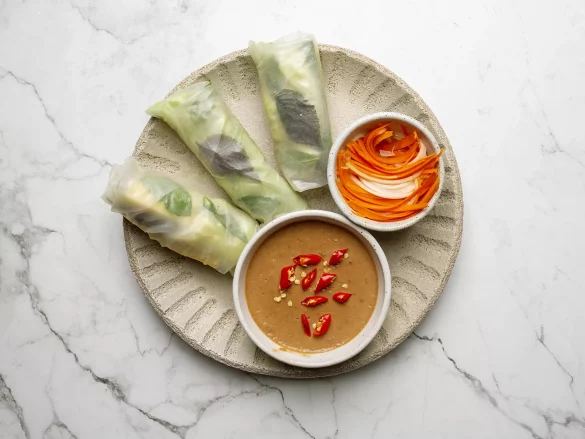Vietnamese rice paper rolls, also known as gỏi cuốn or fresh spring rolls, are a beloved dish that encapsulates the fresh, vibrant flavors of Vietnamese cuisine. These rolls are a delicious and versatile option for appetizers, snacks, or light meals. This guide will cover everything from the history of rice paper rolls to detailed preparation methods, variations, and tips for creating an impressive platter.
1. Introduction to Vietnamese Rice Paper Rolls
History and Origin
Vietnamese rice paper rolls have been a staple in Vietnamese cuisine for centuries. Traditionally enjoyed as a light meal or appetizer, they feature a combination of fresh vegetables, herbs, and protein wrapped in delicate rice paper. The concept of wrapping food in rice paper is believed to have originated from China, but it was in Vietnam that it evolved into the modern spring roll.
Key Ingredients
- Rice Paper: Thin, translucent sheets made from rice flour, water, and salt. They are essential for wrapping the fillings.
- Protein: Common choices include shrimp, pork, chicken, or tofu.
- Vegetables: Fresh ingredients such as lettuce, cucumbers, carrots, and bean sprouts add crunch and flavor.
- Herbs: Herbs like mint, cilantro, and basil provide aromatic notes that enhance the freshness of the rolls.
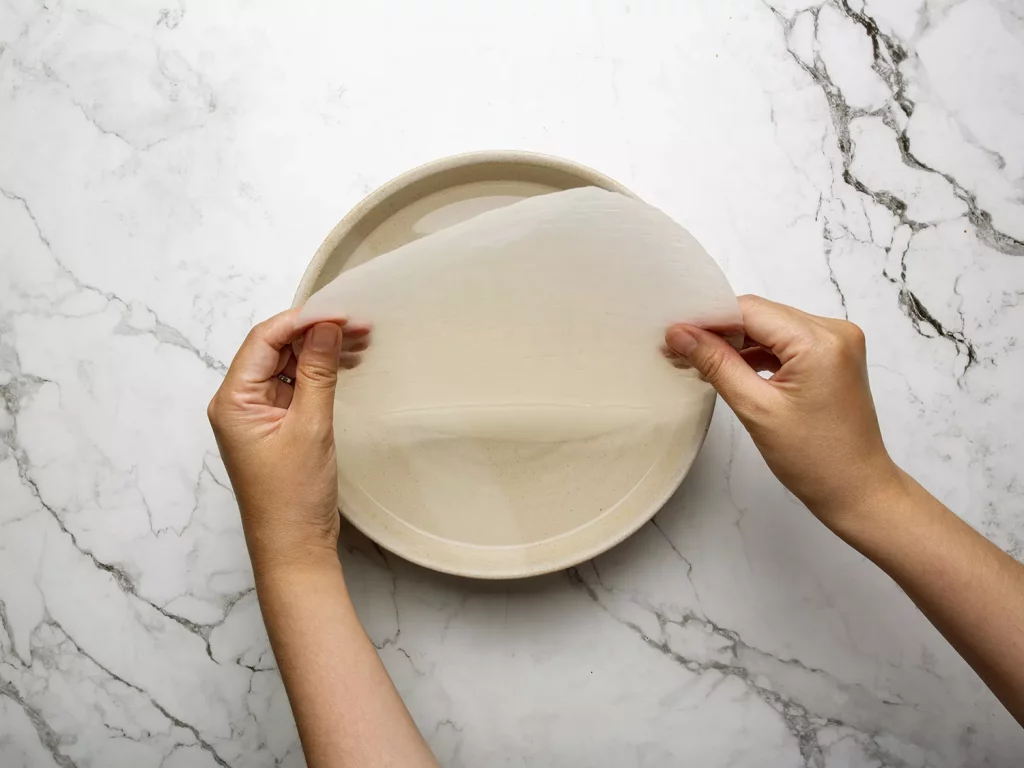
2. Preparing Rice Paper Rolls
Ingredients for the Platter
- Rice Paper Sheets: Available at Asian grocery stores. Ensure they are fresh and not cracked.
- Protein Options: Cooked shrimp, grilled pork, shredded chicken, or marinated tofu.
- Vegetables: Shredded carrots, julienned cucumbers, bean sprouts, and lettuce.
- Herbs: Fresh mint, cilantro, and Thai basil.
- Rice Noodles: Thin rice vermicelli noodles add texture and substance.
- Dipping Sauces: Peanut sauce, hoisin sauce, and nuoc cham (Vietnamese dipping sauce).
Preparation Steps
- Prepare the Fillings: Cook and slice proteins as needed. Prepare vegetables by washing, peeling, and cutting into thin strips. Cook rice noodles according to package instructions and rinse under cold water.
- Prepare the Rice Paper: Fill a large bowl with warm water. Submerge one rice paper sheet at a time for about 10-15 seconds, or until it becomes pliable. Avoid over-soaking as it can make the paper too sticky.
- Assemble the Rolls:
- Place the softened rice paper on a clean surface or cutting board.
- Arrange a small amount of each filling in the center, leaving space on the edges for folding.
- Fold the sides of the rice paper over the filling, then roll from the bottom to the top, tucking in the sides as you go.
- Repeat: Continue assembling rolls until you have the desired number. Keep the rolls covered with a damp cloth to prevent them from drying out.
3. Variations and Creative Ideas
Classic Shrimp and Pork Rolls
- Ingredients: Cooked shrimp, grilled pork, rice vermicelli, lettuce, mint, cilantro, and rice paper.
- Instructions: Arrange shrimp, pork slices, and vermicelli with herbs on the rice paper, then roll tightly.
Vegetarian Tofu Rolls
- Ingredients: Marinated tofu, shredded carrots, cucumbers, lettuce, fresh herbs.
- Instructions: Use tofu marinated in soy sauce and spices. Assemble with vegetables and herbs for a fresh vegetarian option.
Seafood Rolls
- Ingredients: Cooked crab meat, cooked shrimp, thinly sliced avocado, cucumber, and rice paper.
- Instructions: Combine crab meat and shrimp with avocado and cucumber. Roll and serve with a tangy dipping sauce.
Fruit and Herb Rolls
- Ingredients: Mango slices, strawberries, fresh mint, basil, and rice paper.
- Instructions: Layer fruit and herbs for a sweet and refreshing variation. Serve with a honey-lime dipping sauce.
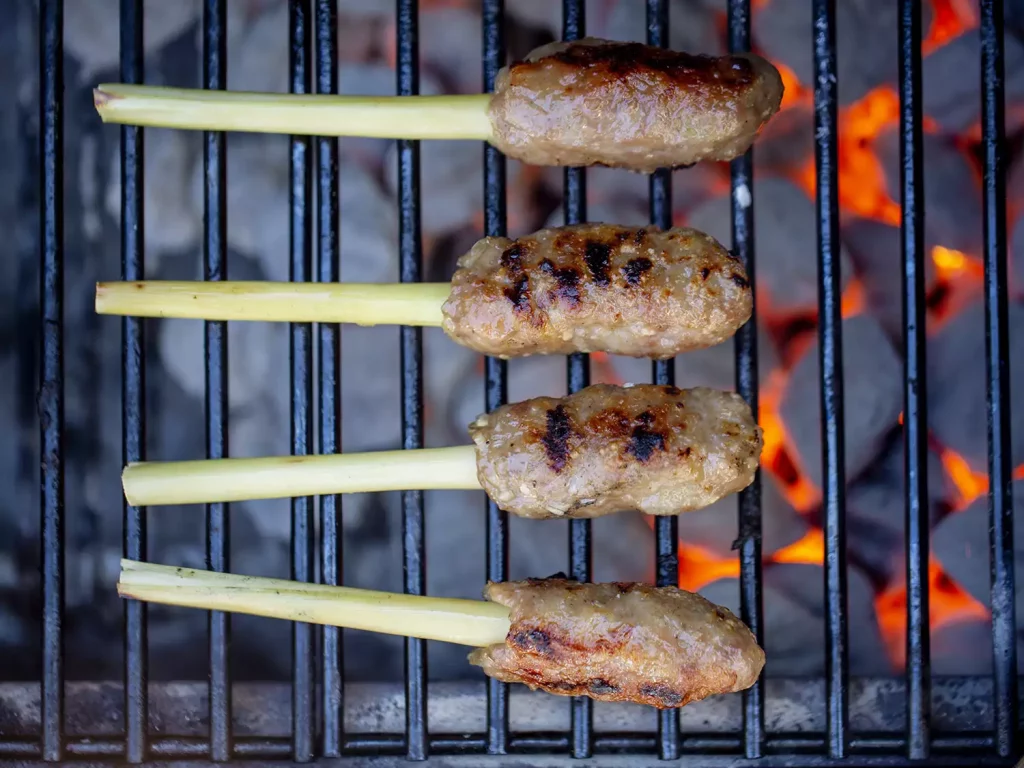
4. Making the Perfect Dipping Sauces
Peanut Sauce
- Ingredients: Peanut butter, hoisin sauce, soy sauce, garlic, and a splash of water.
- Instructions: Combine peanut butter, hoisin sauce, and soy sauce in a bowl. Add minced garlic and mix until smooth. Adjust consistency with water.
Hoisin Sauce
- Ingredients: Hoisin sauce, rice vinegar, sugar, water.
- Instructions: Mix hoisin sauce with rice vinegar and a little sugar. Add water to reach desired consistency.
Nuoc Cham (Vietnamese Dipping Sauce)
- Ingredients: Fish sauce, lime juice, sugar, garlic, and chili.
- Instructions: Combine fish sauce with lime juice, sugar, minced garlic, and sliced chili. Adjust to taste.
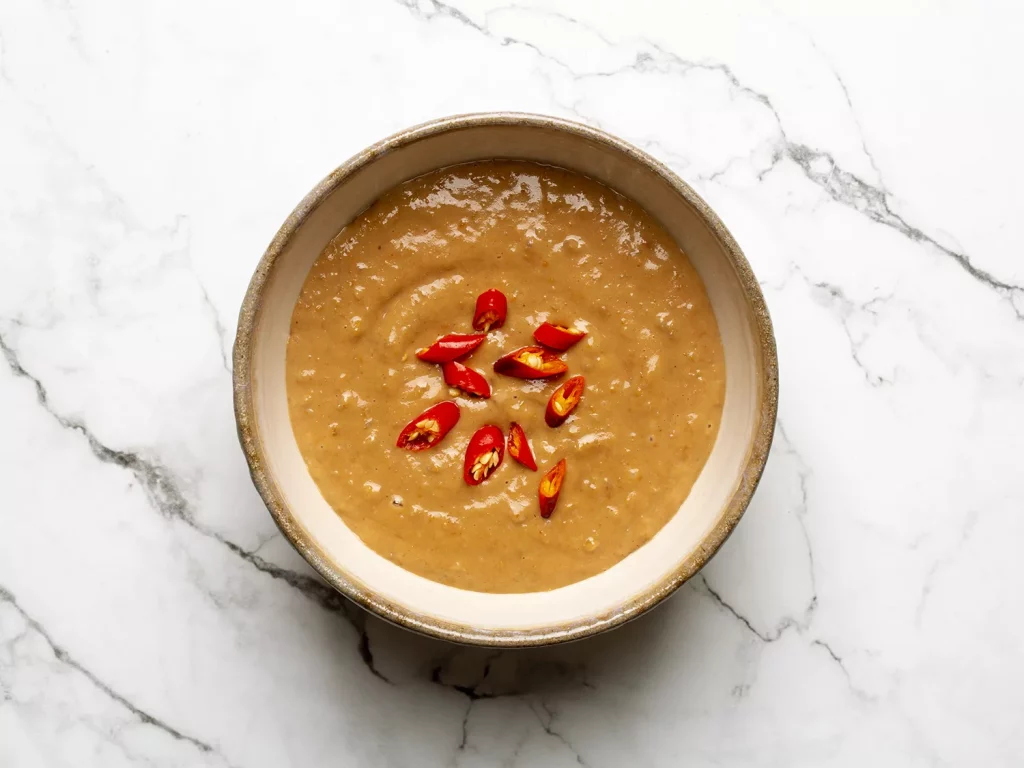
5. Tips and Tricks for Success
Handling Rice Paper
- Soaking: Ensure the water is warm but not hot. Over-soaking can lead to tearing.
- Drying: Place rolls on a damp cloth or parchment paper to prevent sticking. Avoid using plastic wrap directly on the rolls as it can cause them to stick.
Filling Ideas
- Balance: Aim for a balanced mix of protein, vegetables, and herbs. Avoid overloading the rolls to make rolling easier.
- Freshness: Use fresh ingredients for the best flavor and texture.
Serving and Storing
- Serving: Arrange rolls neatly on a platter with dipping sauces on the side. Garnish with additional herbs for a vibrant presentation.
- Storing: If you need to store rolls, cover them with a damp cloth to keep them from drying out. They are best eaten fresh but can be stored in the refrigerator for up to 24 hours.
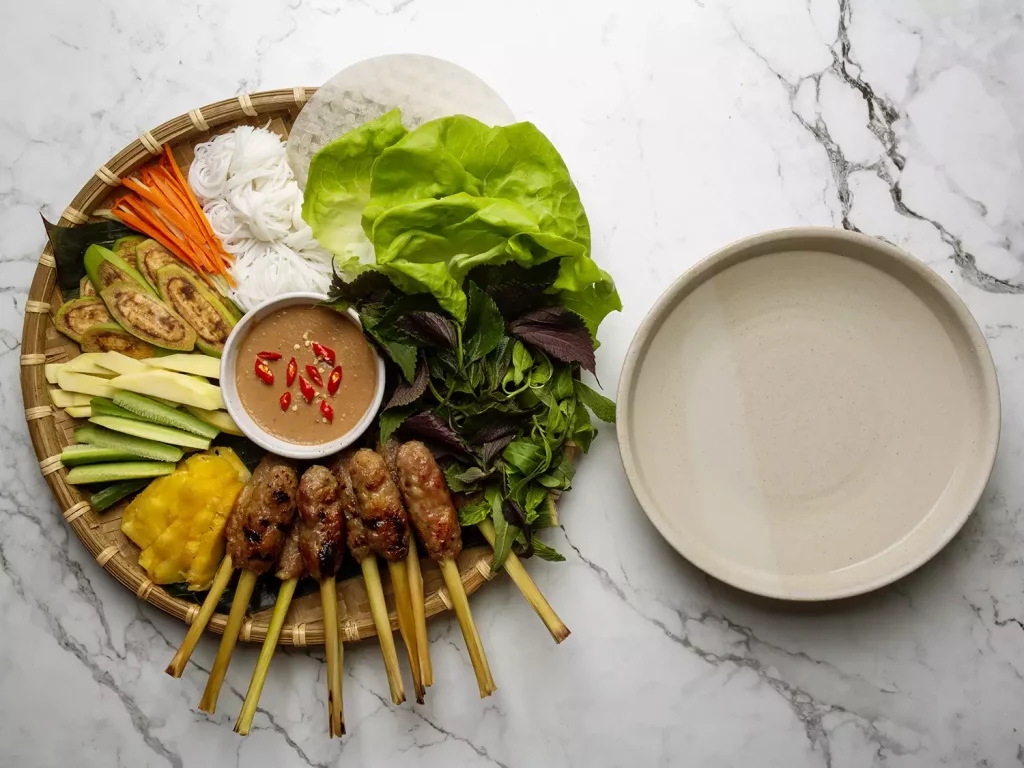
6. Pairing and Presentation
Pairing Suggestions
- Drinks: Serve with light beverages such as iced tea, coconut water, or a crisp white wine.
- Sides: Complement with other Vietnamese dishes like pho, banh mi, or a fresh salad.
Presentation Tips
- Platter Arrangement: Arrange rolls in a circular pattern on a large platter for an attractive presentation. Include small bowls of dipping sauces around the platter.
- Garnishing: Add garnishes such as cilantro sprigs, lime wedges, or sliced chili for color and flavor.
7. Cultural Significance and Enjoyment
Cultural Context
Rice paper rolls are a symbol of Vietnamese culinary tradition, often enjoyed during family gatherings, festive occasions, and casual meals. They represent a balance of flavors, textures, and nutritional value, reflecting the principles of Vietnamese cooking.
Enjoying the Rolls
- Interactive Eating: Rice paper rolls are often served as a communal dish where everyone assembles their own rolls, adding their preferred fillings and dipping sauces.
- Customizing: Encourage guests to experiment with different fillings and sauces to create personalized rolls.
8. Advanced Techniques and Variations
Making Homemade Rice Paper
- Ingredients: Rice flour, tapioca flour, and water.
- Instructions: Mix rice flour and tapioca flour with water to form a batter. Spread thinly on a steamer rack and steam until set. Allow to cool and cut into sheets.
Incorporating Global Flavors
- Mexican-Inspired Rolls: Use ingredients like black beans, corn, avocado, and cilantro for a fusion twist.
- Mediterranean Rolls: Fill with hummus, roasted red peppers, olives, and feta cheese.
9. Troubleshooting Common Issues
Rolls Sticking Together
- Solution: Use a damp cloth between layers of rolls to prevent sticking. Avoid over-soaking the rice paper.
Torn Rice Paper
- Solution: If rice paper tears, use less water to soak or handle with care. You can patch small tears with additional rice paper.
Dry or Tough Rolls
- Solution: Ensure rolls are properly covered and not exposed to air. Use a damp cloth to keep them moist.
10. Conclusion
Vietnamese rice paper rolls are a delightful dish that showcases the freshness and complexity of Vietnamese cuisine. By mastering the art of preparing these rolls and experimenting with various fillings and dipping sauces, you can create a platter that is both visually appealing and delicious. Whether you’re hosting a gathering or enjoying a light meal, rice paper rolls offer a versatile and enjoyable culinary experience.
This comprehensive guide provides a thorough understanding of Vietnamese rice paper rolls, from the history and preparation methods to creative variations and tips for success. Embrace the versatility of this dish and enjoy the process of making and sharing these delightful rolls with family and friends.
This expanded guide covers the history, preparation, variations, and tips for making Vietnamese rice paper rolls, providing a comprehensive resource for enthusiasts and home cooks alike. If you need more specific details or additional sections, feel free to ask!

